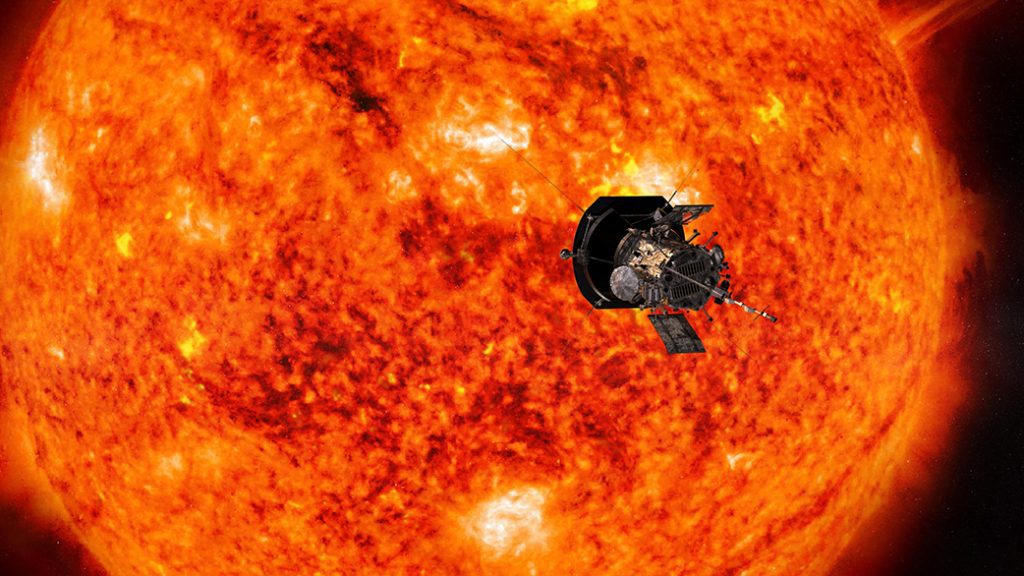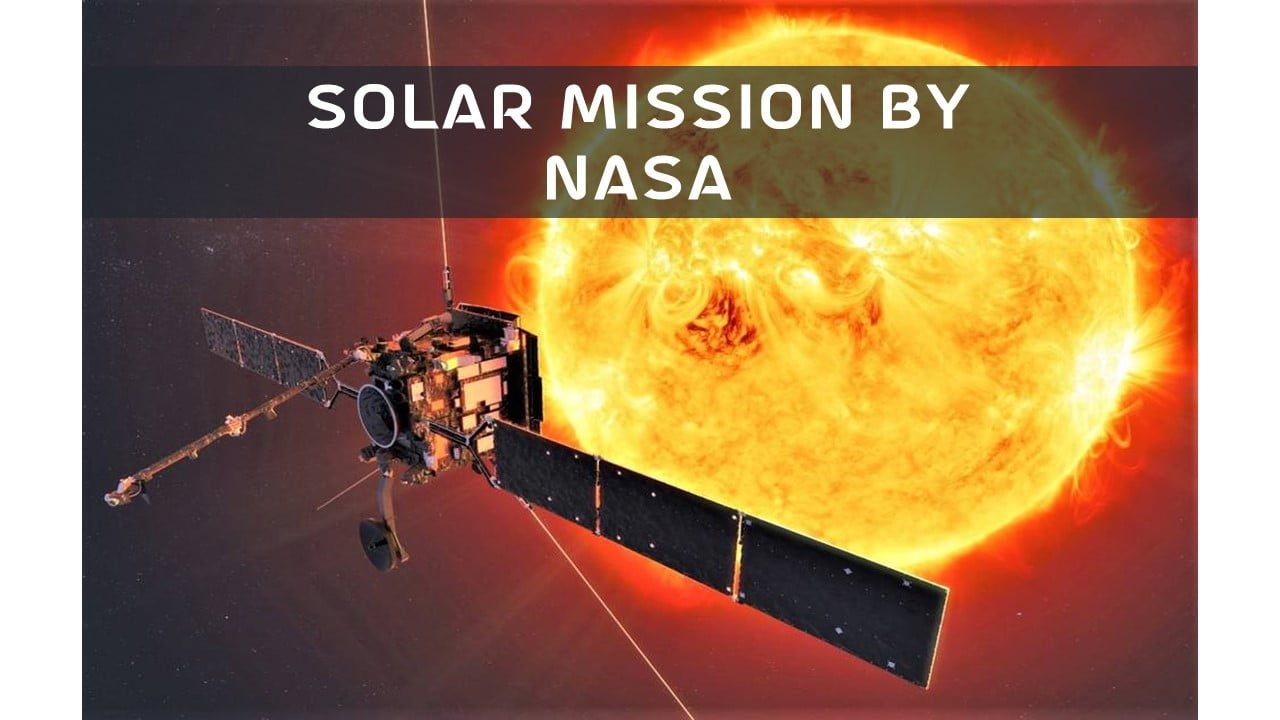Solar Mission of NASA - Entering the Solar Atmosphere
In a relatively short period, we, as humans, have seeded our corner of the cosmos with a plethora of markers of our existence. Hundreds of satellites have been sent into orbit, providing a technological blanket over the Earth.
Spacecraft were sent to fly past planets and moons, circle them, and examine their surfaces. We pierced the invisible line dividing the end of our solar system from the beginning of everything else a few years ago, hurtled into the darkness beyond, and pierced it once again.
●⫸ What is the Solar Mission?
In the Recent Solar Mission of NASA, Nasa has picked two additional missions to examine our solar system’s brightest star, only a day after disclosing the latest data from the Parker Solar Probe on its approach to the Sun.
The Multi-slit Solar Explorer (MUSE) and HelioSwarm missions will help scientists learn more about the Sun’s dynamics, the Sun-Earth interaction, and the constantly changing space environment.
The two recent solar missions of NASA have been critical to gather additional data in preparation for future manned missions to the Moon and, eventually, Mars.
Scientists will attempt to understand more about our universe and give critical information to help in the safety of astronauts, satellites, and communications signals such as GPS.
●⫸ What information will we get?
MUSE and HelioSwarm will deliver new and more detailed information on the solar atmosphere and space weather. In a statement, Nasa’s acting administrator for science, Thomas Zurbuchen, stated-
“These initiatives not only broaden the study of our past heliophysics missions, but they also provide a new viewpoint and a creative technique to grasping the mysteries of our star.”
The Muse mission will seek to increase our understanding of the forces that cause the Sun’s corona to heat up and erupt in that outermost zone, which is at the core of space weather. According to Nasa, it will offer additional data on the physics of the solar atmosphere.
The multi-slit spectrometer onboard the probe will monitor the Sun’s intense UV radiation and take the highest-resolution images of the solar transition area and corona ever taken.
A spacecraft orbited the Sun for the first time in human history. The Parker Solar Probe, a NASA spacecraft, has now gathered particles and magnetic fields in the Sun’s corona, or upper atmosphere.
The current accomplishment is a big step forward for the Parker Solar Probe as well as for solar studies in general. Touching the same material that makes up the Sun will help scientists learn more about our closest star and its impact on the solar system, similar to how landing on the Moon helped scientists learn more about how it was formed.
●⫸ Is it possible to reach the Sun?
The spacecraft will investigate the causes of coronal heating and instability, including flares and coronal mass ejections, as well as learn more about the corona’s basic plasma properties when the Sun enters a new cycle and activity on the surface increases.
Meanwhile, the HelioSwarm mission will consist of a constellation of nine spacecraft that will take the first multiscale in-space measurements of magnetic field variations and solar wind movements known as Solar Wind Turbulence.
Solar winds travel through the heliosphere, and their turbulence is affected by interactions with planetary magnetospheres and disturbances like coronal mass ejections, according to Nasa.
“The Parker Solar Probe “touching the Sun” is a landmark moment for solar study and an incredible achievement,” said Thomas Zurbuchen, NASA‘s Science Mission Directorate’s associate administrator in Washington.
“Not only does this accomplishment aid our understanding of our Sun’s evolution and its implications for our solar system, but what we learn about our star also aids our understanding of other stars in the cosmos.”
The first flyover into the corona, which will be followed by many more, will continue to offer data on processes that are difficult to detect from afar.
“Due to its near closeness to the Sun, the Parker Solar Probe is currently detecting circumstances in the corona, the magnetically dominated layer of the solar atmosphere, that scientists have never been able to detect before,” said Nour Raouafi, Parker project scientist at the Johns Hopkins Applied Physics Laboratory in Laurel, Maryland.
“We look at magnetic field data, solar wind data, and photos to find signs of being in the corona. The spacecraft may be seen during a total solar eclipse as it travels through coronal structures.”
●⫸ A brief history of Solar Missions by NASA
The MUSE mission will be overseen by Bart DePontieu of Lockheed Martin Advanced Technology Center (LMATC) in California. Nasa has set aside $192 million to build the probe, which will take high-resolution photos of the growth of solar flare ribbons in a field of view focused on a large, active region on the Sun.
Harlan Spence of the University of New Hampshire will be in charge of the $250 million HelioSwarm missions.
“The technological breakthrough of HelioSworm’s small satellites working together as a constellation provides the unique potential to examine turbulence and its evolution in the solar wind,” Peg Luce, deputy head of the Heliophysics Division, said in a statement.
●⫸ What is Parker Solar Probe Mission?
On Nov. 21, NASA’s Parker Solar Probe made its tenth close approach to the Sun, passing within 5.3 million miles (8.5 million kilometers) of the solar surface and setting a new speed record that would allow it to travel from Earth to the Moon in less than an hour.

The close approach (also known as perihelion) occurred at 4:25 a.m. EST (8:25 a.m. UTC) at a record distance, with the Parker Solar Probe traveling 364,660 miles per hour (586,864 kilometers per hour).
The milestone also marked the halfway point of the mission’s tenth solar encounter, which began on November 16 and will conclude on November 26.
The spaceship came in good condition, with all systems working properly. The Parker Solar Probe will interact with mission controllers at the Johns Hopkins Applied Physics Laboratory in Laurel, Maryland, on November 24, where it was also designed and built.
The spacecraft will transmit science data from the encounter to Earth from December 23 to January 9, focusing on the properties and structure of the solar wind as well as the dust environment surrounding the Sun.
●⫸ Conclusion:
The Parker Solar Probe is part of NASA‘s Living with a Star program, which seeks to learn more about the consequences of the Sun-Earth system on life and civilization.
The Living with a Star initiative is managed by NASA’s Goddard Space Flight Centre in Greenbelt, Maryland, and is overseen by the agency’s Science Mission Directorate in Washington.
NASA‘s Johns Hopkins University Applied Physics Laboratory in Laurel, Maryland, manages the Parker Solar Probe project, as well as planning, building, and controlling the spacecraft.


